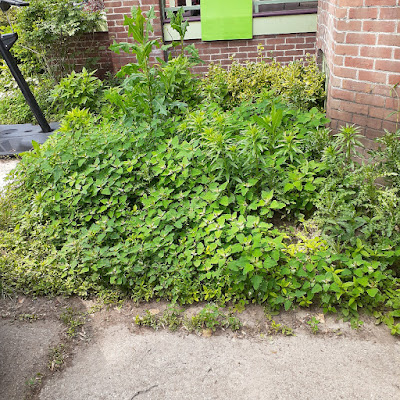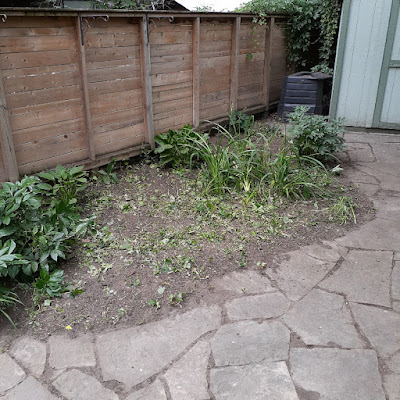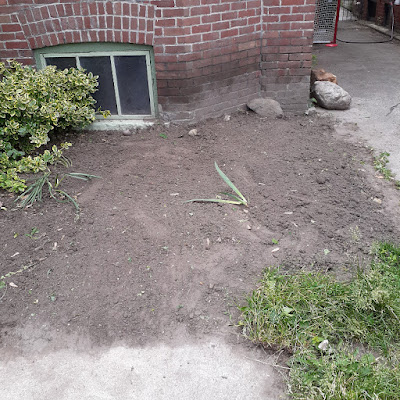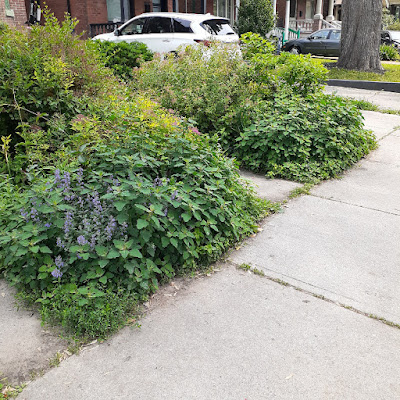Creating Oases in a Desert of Landscaping Imagination
I suppose it's an occupational hazard to notice plants and overall landscaping when I travel across Toronto from one client to another. There's no physical danger involved, of course, when I take a quick peek at the good, bad and unusual.
What I mean by "unusual" is anything that doesn't involve planting the Unholy Trinity of Foundation plants: "Emerald" white cedars, boxwoods and hydrangeas. You could add half of dozen other overused shrubs, trees and perennials in this "contractor's must-have" list and see the pattern repeated over and over again in any part of the city. Very boring, unimaginative and lazy.
When I'm asked to create a new garden from a blank slate or simply tinker with an established one, it's an excellent opportunity to "think outside the box-wood" and put in place, hopefully, a functional, ecologically-resilient and attractive piece of the overall property puzzle for the homeowner.
Not everyone gets this: Whether it's due to a small budget, a limited knowledge of plants in general or a myriad of other possible excuses reasons, some prefer not to commit in removing prized shrubs which haven't been pruned in a decade (or, alternatively, clipped constantly into badly executed topiaries). Other truly like (love?) their lily of the valley groundcover.
Neighbourhood peer pressure also can play a factor. Heaven help you if you think of growing vegetables in the front yard in certain tonier areas. You may even receive a letter (anonymous of course) expressing a concern that your little patch is lowering the neighbourhood's property value.
But for those special clients, like these homeowners in the western section of Toronto of Etobicoke, who are tired of the the same old, same old and want to change the look and feel of their gardens, I think I can add value.
This couple "Dave and Sheila" (pseudonyms, although I actually know a couple named so who are very good friends!) reached out to me in 2021 and it took some time to work out the process of developing the two front garden sections. Prior to the new installation, the beds had typical perennials and traditional shrubs like, ahem, a bigleaf hydrangea, a large Euonymus beachball, some bulbs, "Autumn Joy" stonecrop and Shasta Daisies taking over some of the beds:
 |
| Etobicoke garden makeover before |
 |
New Toronto garden makeover before
|
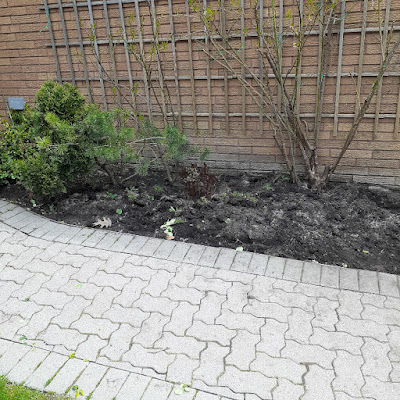 |
Etobicoke garden makeover before
|
 |
New Toronto pollinator garden installation before
|
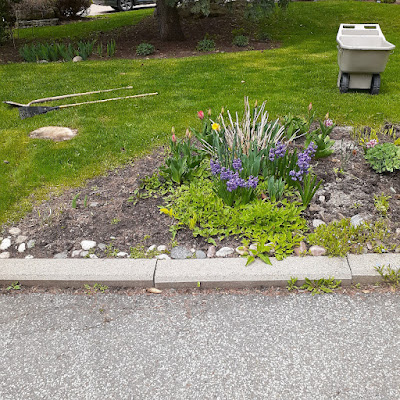 |
New Toronto pollinator garden installation before
|
 |
| New Toronto pollinator garden makeover before |
 |
| Etobicoke pollinator garden makeover before |
Now, I know how some homeowners can be attached to a certain prized Eounymus so I inquired gently if said plant could be removed. I was greatly relieved to hear the answer "Yes!" Dave and Sheila were also wonderful enough to dig out the old curmudgeon (Euonymus, not me). My back feels sore just thinking about this endeavour.
My vision (sounds pretentious, doesn't it?) was to create small pollinator-friendly oases in a desert of surrounding boxwoods, yews, hydrangeas, etc. Imagine if you're a bee or butterfly flitting around the neighbourhood, desperately looking for pollen and nectar. Not to worry, I have you, my winged friend, in mind!
I'm not hung up about designing with only native plants. Gardens are for people along with our wild friends. Why limit yourself for the sake of achieving the Holy Grail of 100 percent native plants in a design? Being dogmatic seems silly to me. And Dave and Sheila didn't care one bit.
I'm sure they just wanted to get rid of the Euonymus ball without a guilty conscience so I gave them my complete permission and blessing.
Afterwards...
It's a bad habit but I can't help it: whenever I choose new plants for a site, I invariably decide on those plants I would like to see, touch and experience if these were my gardens. Of course, I ask the homeowners what flower colours they like (or, more importantly, what colours they don't like), what plants evoke a good memory (or, again, bad memory) and other probing horticultural questions bordering on armchair psychiatry. It makes my job choosing plants, of course, infinitely easier if I get the usual reply: "it doesn't matter, you choose."
Which was Dave and Sheila's gracious answer.
So I chose a mixture of natives and non-natives perennials, some very ornamental, others more functional (a pollinator favourite), some which bloom early, others later in the season.
Here are some pictures of the beds after transplanting:
 |
| Etobicoke garden makeover after |
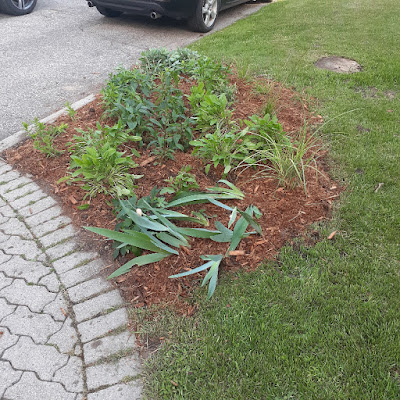 |
| Etobicoke pollinator garden makeover after |
 |
| New Toronto pollinator garden installation after |
 |
| New Toronto pollinator garden installation after |
 |
| New Toronto garden makeover after |
 |
| New Toronto pollinator garden makeover after |
Pollinator-friendly perennials I planted include the usual suspects:
With adequate watering, both humans and other animals should appreciate this collaboration.
I doubt the Euonymus will be missed either.


